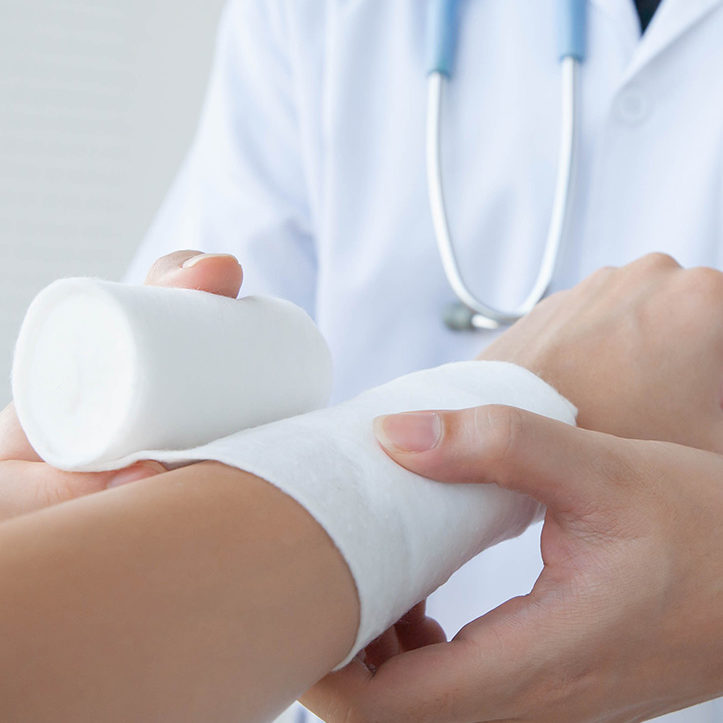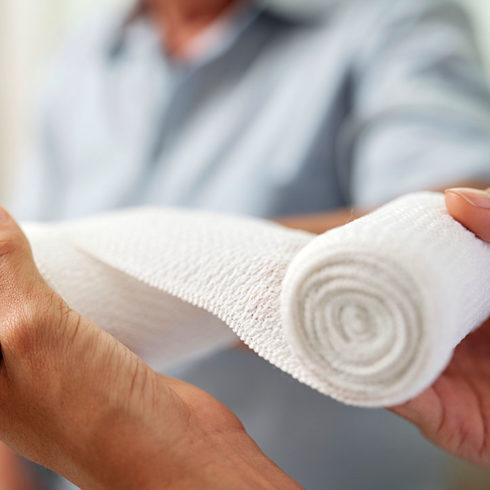Chronic skin wounds affect an estimated 6.5 million people in the United States, with treatment costs accounting for up to $25 billion per year. Populations at risk for chronic skin wounds include the elderly and those with comorbidities such as diabetes and obesity. Without proper wound care, chronic wounds can lead to severe local infection, sepsis, tissue or limb amputation, or death.

Wounds
There are two types of wounds: acute and chronic. Acute wounds can be from surgery, trauma, or even thermal (burns). A chronic wound is an acute wound that fails to heal within 2-3 weeks after appropriate standard wound care.
Chronic Wound Management
Chronic wound management is complex and ever-evolving. A surgical wound or a repaired laceration under increased tension or improper closer will open and can become a chronic wound. Types of chronic wounds include diabetic foot ulcers, arterial ulcers, chronic venous ulcers, surgical wound dehiscence, and pressure wounds – better known as bedsores.


Traditional Treatment Options
Wound care is mainly practiced in clinics or institutions, but now many providers are performing basic wound care in their practices. Traditional wound care applications include natural remedies, antimicrobial dressings, skin grafts, and more. These treatments have all at one time been innovators in the field of wound care, treating wounds gradually in hopes of permanent healing. Though these traditional wound care options provide great potential healing benefits, they often require multiple applications and long periods of time to see improvement.
Why New Life Wound Care Treatments?
According to Biomedicine Taipei, “Wound healing is the result of interactions among cytokines, growth factors, blood, and the extracellular matrix. The cytokines promote healing by various pathways such as stimulating the production of components of the basement membrane, preventing dehydration, increasing inflammation, and the formation of granulation tissue. These pathways are affected by various local and systemic factors [16]. Local factors which include hypothermia, pain, infection, radiation, and tissue oxygen tension directly influence the characteristics of the wound whereas systemic factors are the overall health or disease state of the individual that affect an individual’s ability to heal [17]. In addition to these factors, poor nutrition, age and protein, vitamins and mineral deficiency can also prolong healing times”
(Selvaraj Dhivya, 2015) .
Traditional wound care treatments provide a band-aid to the wound but don’t assist in accelerating the healing process. At New Life, our wound care treatment approach provides a regenerative environment capable of healing wounds at a faster rate. New Life’s wound care program includes amniotic tissue membranes. These membranes, or patches, contain cytokines, growth factors, the extracellular matrix, and more. These components are formulated within our bodies but become less rampant as we age. By utilizing the natural biologics properties of amniotic tissue membranes, these healing components can get to work immediately, providing an extra boost of healing that the body is not creating in abundance. Additionally, amniotic tissue membrane can reduce scar tissue formation, allowing for an enhanced healing process to occur.
Other benefits of utilizing New Life’s wound care program are:
Reduction of pain when applied to a wound
Contains antibacterial properties
Non-immunogenic (will not be seen as a foreign material)
Provides a biological barrier
Provides a matrix for migration and proliferation of cells
Reduces inflammation
Works Cited
Selvaraj Dhivya, V. V. (2015, December 5). Wound dressings – a review. Biomedicine (Taipei), 5(4), 22.
